2021 Volvo XC40 Recharge Twin Pure Electric review
Volvo is on a mission to go electric – and the journey has begun with the Volvo XC40 Recharge Pure Electric.
The Swedish brand has already confirmed that its next generation XC60 and XC90 – due around 2024 and 2022 respectively – will only be available as EVs. Not hybrids or plug-ins, but pure battery electric vehicles, albeit possibly wearing different nomenclature.
And now the EV journey has kicked off locally with the arrival of the XC40 Recharge Pure Electric.
As the name suggests, the XC40 Pure Electric borrows the XC40’s compact SUV body and replaces anything petrol with all things electricity.
It shares its electrical components with those on the upcoming Polestar 2 Long Range Dual Motor.
It’s the start of an influx of Volvo EVs, which in 2022 will also include the C40 Recharge.
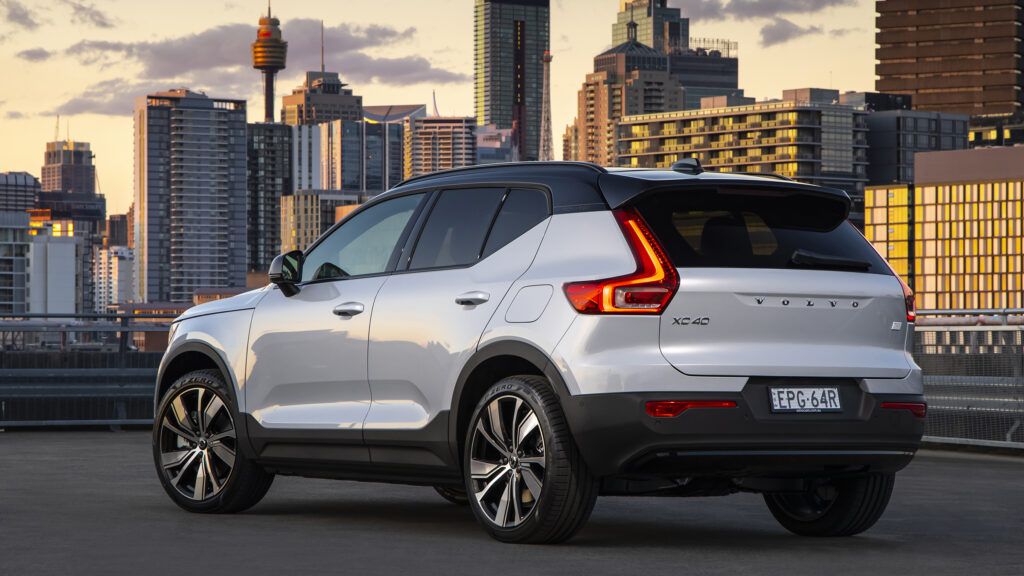
While the soon-to-arrive larger electric SUVs (XC60 and XC90) will be built on a new purpose built EV architecture, the XC40 Pure Electric and C40 utilise an ICE platform modified for batteries and motors.
Value: Volvo XC40 Recharge Pure Electric
The XC40 Pure Electric is priced from $76,990 plus on-road costs.
That places it precariously close to the $78,000 limit for the stamp duty tax break in NSW, which can save up to $3000 when registering the car.
That Volvo charges $995 for dealer delivery – about one third what it does for other XC40s – keeps it under the threshold by $15.
Whereas Volvo charges extra for metallic and premium paints on other XC40s, on the Pure Electric they’re a no cost option.
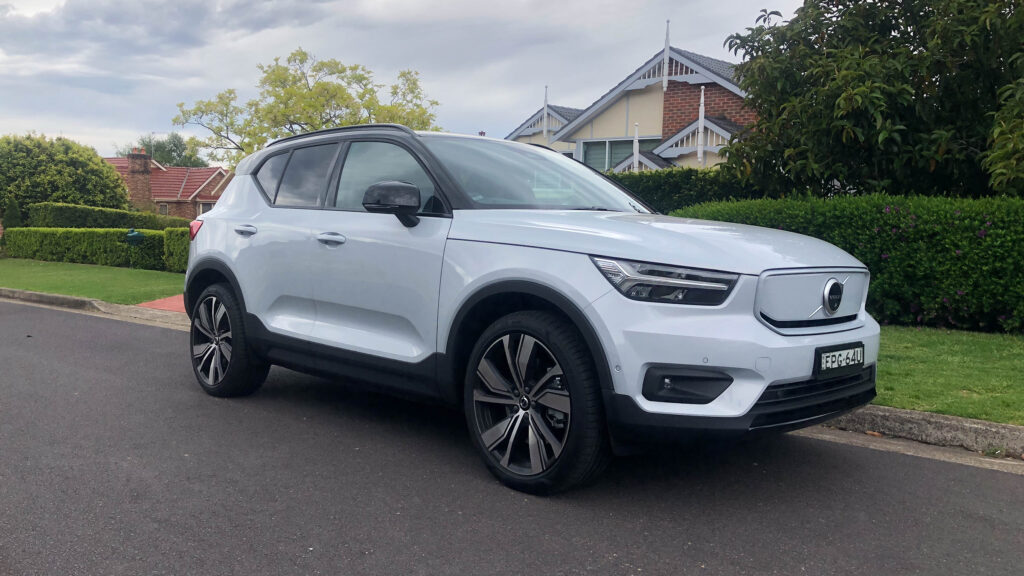
Equipment levels are high for what is a single model.
The XC40 EV comes with 20-inch alloy wheels, a 13-speaker Harman Kardon audio, dual-zone ventilation, heated steering wheel, panoramic sunroof, heated front and rear seats, powered front seats, 360-degree camera, digital instrument cluster and wireless phone charging.
The XC40 will also be the only Volvo EV with leather seats; Volvo is removing leather from its future electric cars, but the XC40 snuck in before that decision was made.
Android Auto is part of the deal, which isn’t surprising given the operating system for the 9.0-inch central touchscreen is Android Automotive (the XC40 Pure Electric is the first car in Australia with Android Automotive). Android Automotive includes plenty of Google apps, including Google Maps and Google Assistant, the latter meaning you can ask just about anything you want, provided the car is within phone range.
Speaking of which, there’s four years of data provided when the car is new, but after that you’ll have to pay a subscription or pair the car to your phone.
Apple CarPlay is due to be introduced with a software update late in 2021.
There’s also loads of active safety gear including auto braking in forward and reverse, speed sign recognition and blind spot warning.
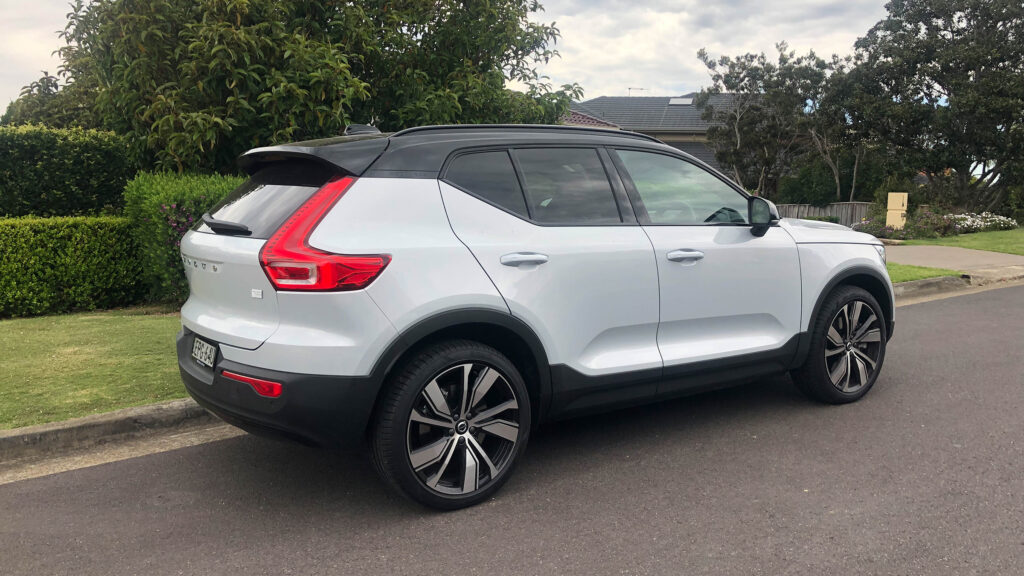
One thing missing compared with other XC40s is a spare tyre; the space saver has been removed due to the space constraints of the electrical components (including batteries) and in its place is a tyre repair kit.
The XC40 Pure Electric also has over-the-air (OTA) software update functionality.
Plus Volvo throws in the first three years/100,000km of servicing. Volvo says another two years’ coverage adds $1000, although there’s nothing stopping you getting it serviced outside the Volvo network for less (servicing is only required every two years or 30,000km).
There is also a single motor version of the XC40 available overseas. While Volvo Australia says “we consider everything”, the company says it’s not on in the model plan locally yet.
Inside the Volvo XC40 Recharge Pure Electric
There’s a hint of Tesla thinking in the XC40 EV. No start button (it’s blanked out) means sitting inside with the key is all that’s required to wake things.
The XC40 Pure Electric is officially a compact SUV, although in reality its interior space is not far off that of some mid-sized SUVs.
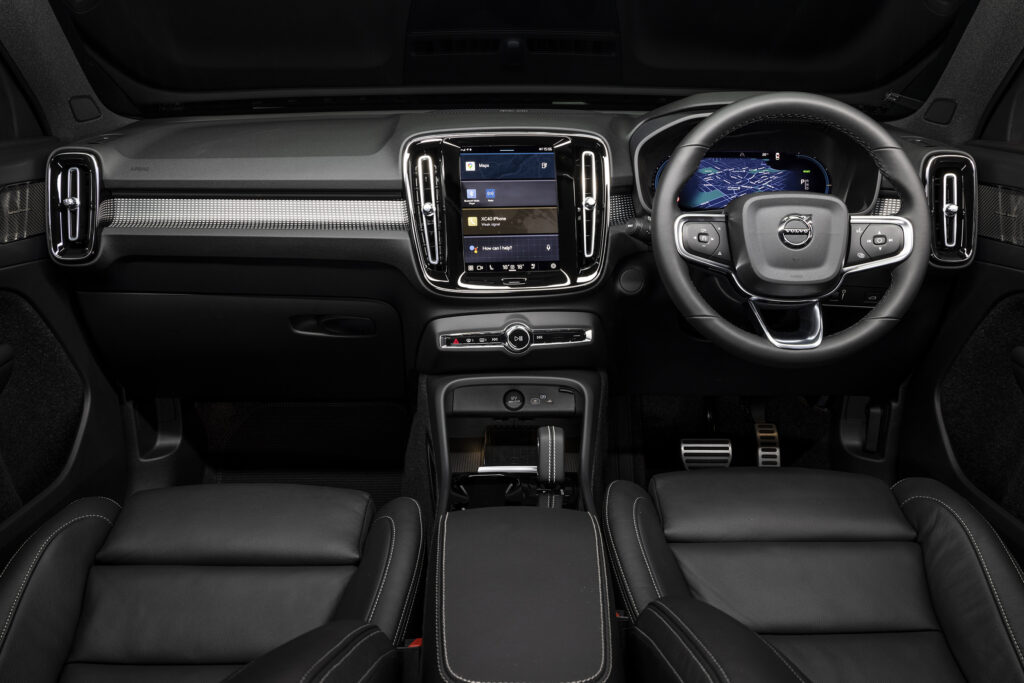
There’s generous head room all around and even adults in the rear are well catered for with leg room. There’s no hiding the hump on the rear floor though, a legacy of being based on the platform of a petrol vehicle.
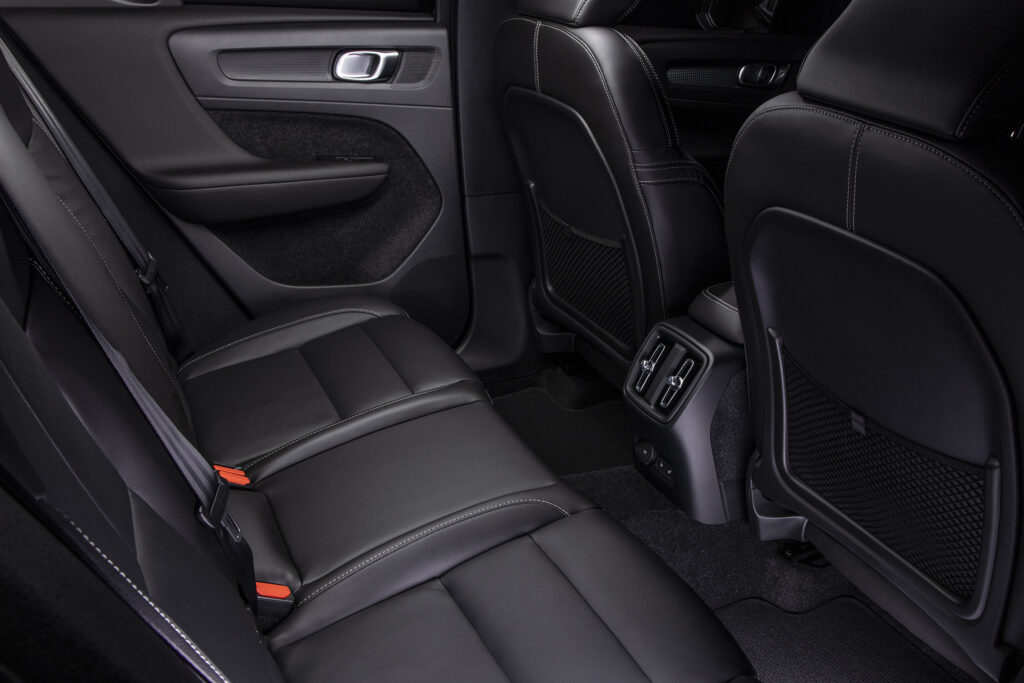
The Pure Electric loses a bit of boot space due to what’s underneath with batteries and the electrical system. The reported luggage capacity is 414 litres, which is down around 10 percent compared with other XC40s; storage beneath the main boot floor is perfect for keeping the EV charging cables. There’s also a 31-litre binnacle under the bonnet, which is handy for smaller items or valuables.
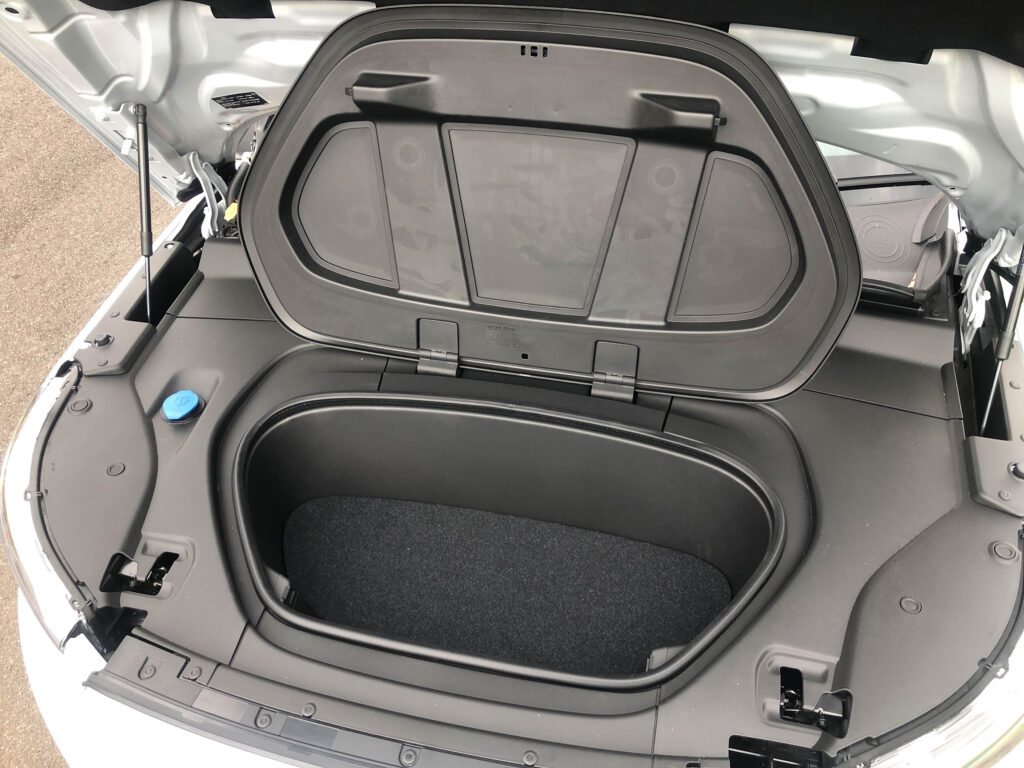
As with other Volvos, the XC40 Pure Electric has a very Scandinavian flavour although it’s manufactured in China.
There’s a minimalism to its cabin design which works nicely with the quality finishes and materials, including carpet made of recycled PET plastic bottles.
The central screen is arranged in a portrait configuration rather than the more common landscape. That works well and the screen itself is clear and easy to navigate. The camera also provides a crisp, clean image when parking.
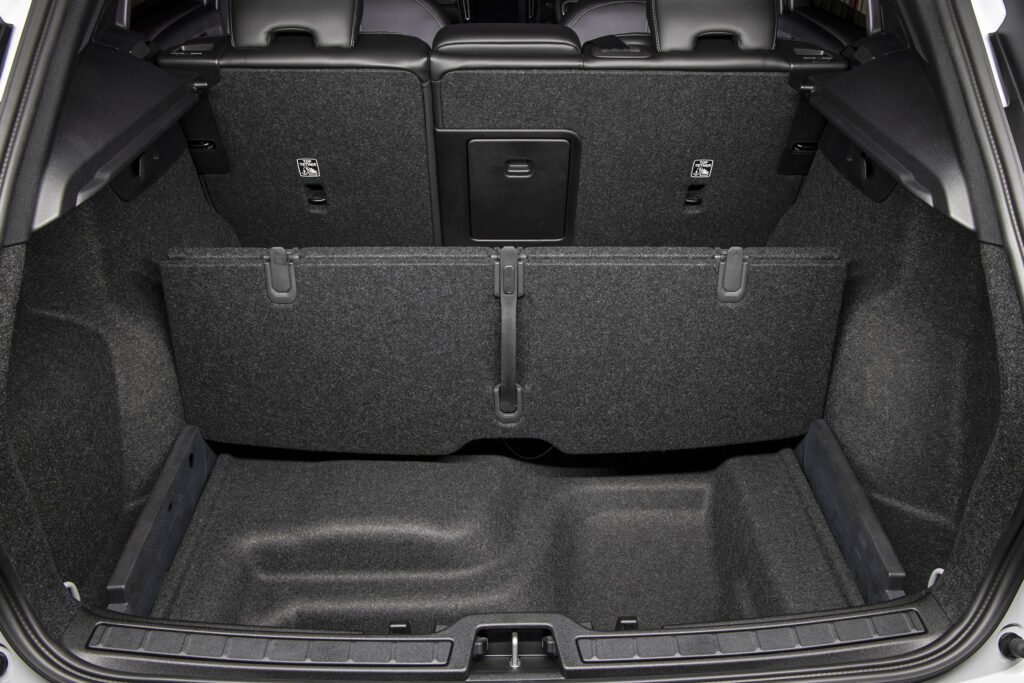
As for Android Automotive, it’s mostly like other Volvos, although takes some familiarisation. Four icons on the main home screen can be tailored to your liking and there are various apps you can download. Want Spotify on the home screen instead of radio? It’s easily done.
However, you’re locked into some things (no other mapping services, for example) and the apps that were available for download were very limited. Hopefully that’ll change over time.
For maximum functionality and to use the Google Assistant you need to be within range of a mobile phone network.
We also had some issues with it. That mobile connectivity ceased to work a couple of times and needed a manual reset of the system. And the radio tuning gave up for a few days. Not exactly reassuring that a tech company can provide the reliability expected in a car.
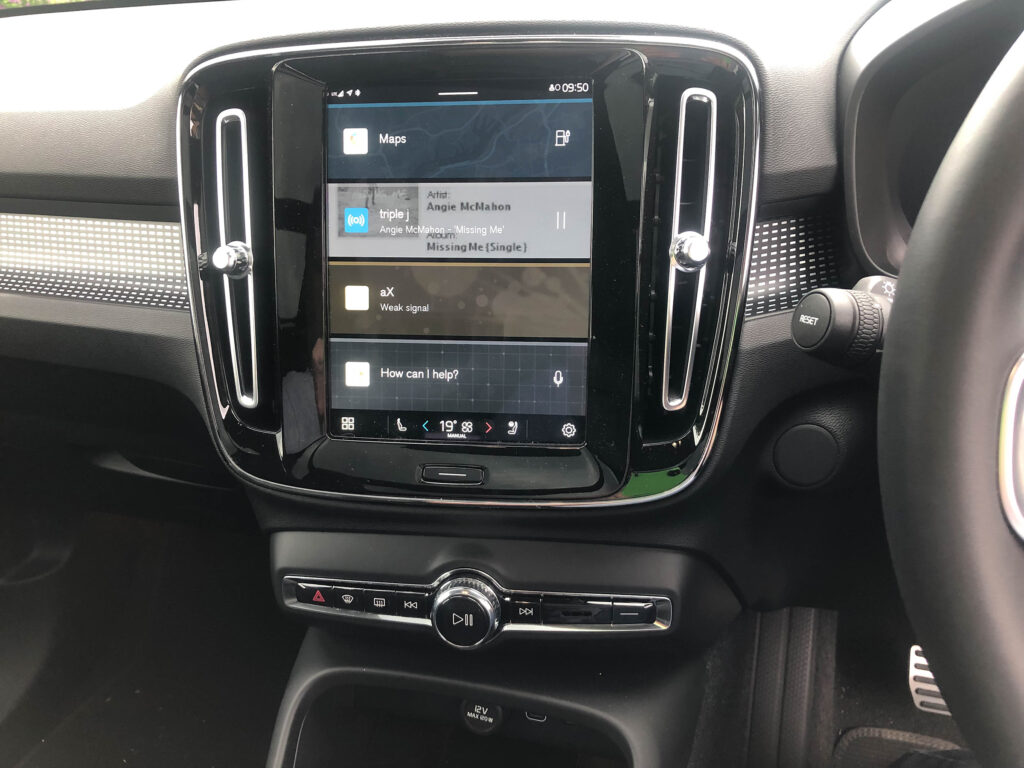
The digital instrument cluster can also incorporate mapping and be adjusted between two main displays. One gripe, however, is there’s no range estimator; instead the main display informs you what percentage of the battery remains and it’s up to you to do the calculations. At around 15-20 percent state of charge it will apparently starting showing you the remaining kilometres, although we had it down to 17 percent and never had a kilometres-to-empty display.
Performance and efficiency
There are two electric motors, one for the front wheels and the other for the rear. Each makes 150kW and 330Nm for a combined output of 300kW and 660Nm.
They’re big numbers that make for deceptively fast progress. The XC40 Pure Electric can leap to 100km/h in 4.9 seconds and it has that wonderful surge as soon as you prod the throttle.
It’s brisk and easily darts into traffic around town.
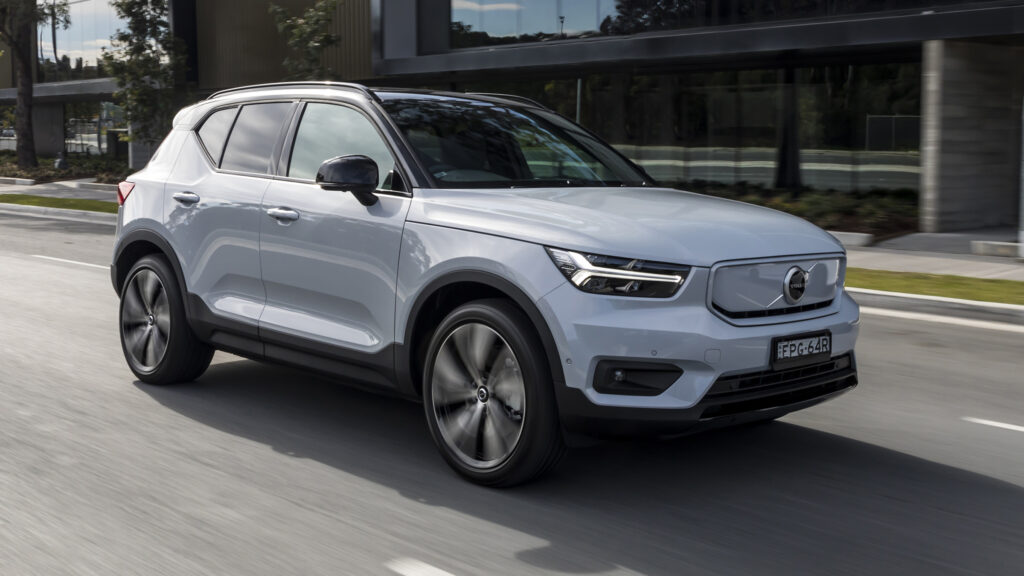
On a winding road it’s even more fun, the plentiful surge ensuring rapid progress.
Those who like being able to finely tailor the level of braking regeneration may be disappointed with the options. At one extreme you’ve got no regen, the car just coasting as you lift off the throttle. And at the other extreme there’s one pedal driving with very pronounced regen.
We preferred the no regen option but also would have liked a choice somewhere in between.
The XC40 Pure Electric easily holds its own on a freeway or country road, comfortably tickling along at 100km/h but with more in reserve for overtaking.
Our brief experience with the cruise control suggested it’s not always great at holding the set speed, sometimes edging over and other times under.
Less impressive is the on-paper efficiency. Claimed average electricity use is 25.5kWh per 100km, which is relatively high by compact SUV standards.
Blame it partially on the performance and also the tyres that appear to have been chosen more for grip and dynamic prowess than saving energy.
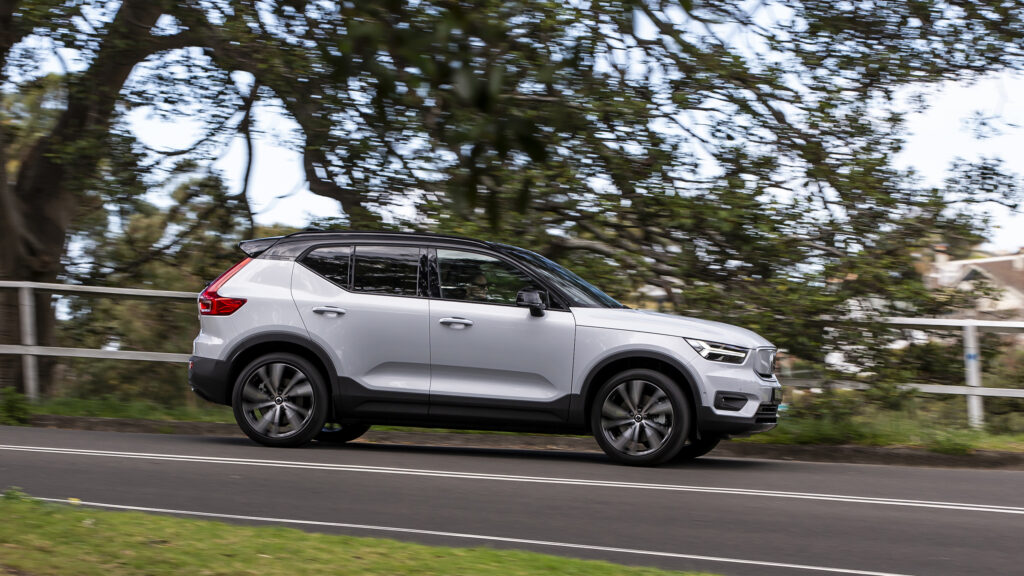
That said, we found it very easy to slip in under the 25.5kWh/100km claim. After a drive that included suburban traffic, country roads and a 90km/h cruise it returned 23.5kWh/100km.
Oh, and the Pure Electric can tow, too. It’s rated for 1500kg, allowing for a small boat, trailer or bike rack.
Charging the Volvo XC40 Recharge Pure Electric
The XC40 Pure Electric has a 78kWh battery, of which 75kWh is useable.
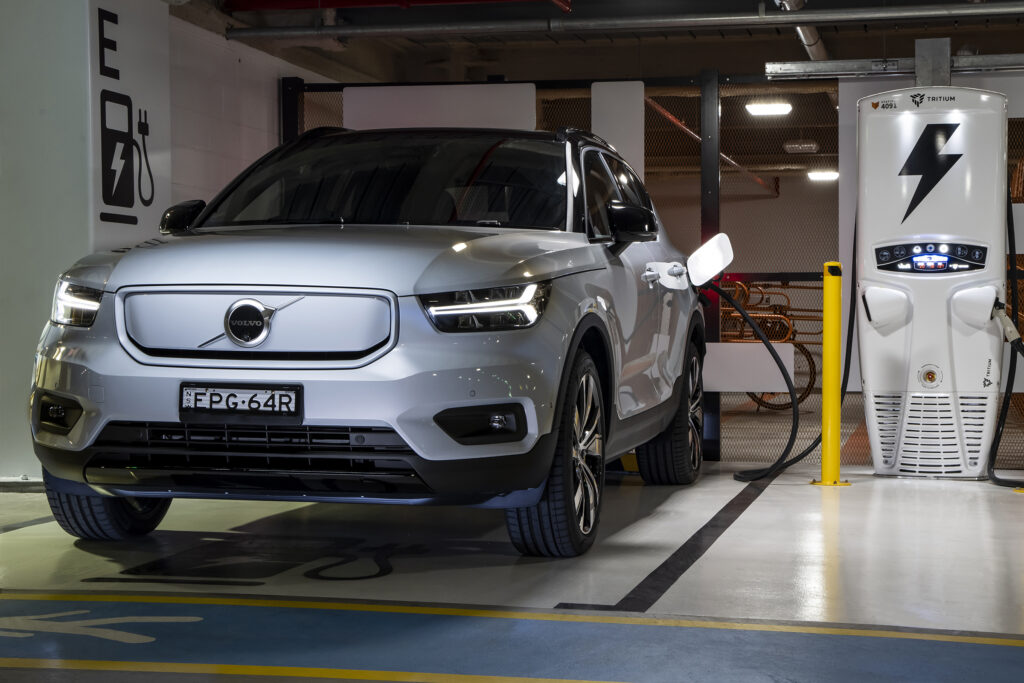
That provides a WLTP EV range of 418km. In the real world our experience suggested that was a tad optimistic and something around 350km would be closer to the mark.
It can be charged at up to 150kW using a CCS combo plug, which Volvo says will provide a charge from 0-80 percent in as little as 40 minutes.
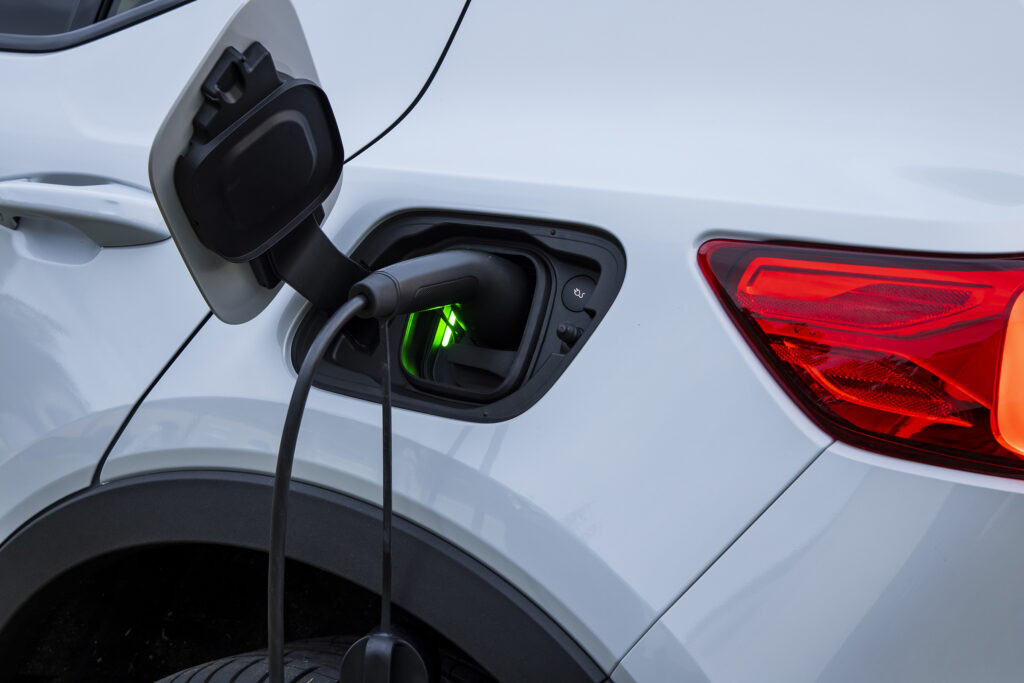
AC wallbox charging can be done at up to 11kW and will provide a full charge in as little as eight hours.
A home powerpoint will take more like 33 hours for a full charge.
Ride and handling
If you hadn’t already figured it out, the XC40 Pure Electric has been built for pace.
That includes the way it deals with corners. There are low profile 20-inch Pirelli P Zero tyres that do a terrific job of pointing the near-2.2 tonnes of EV heft in the direction you’re directing it.
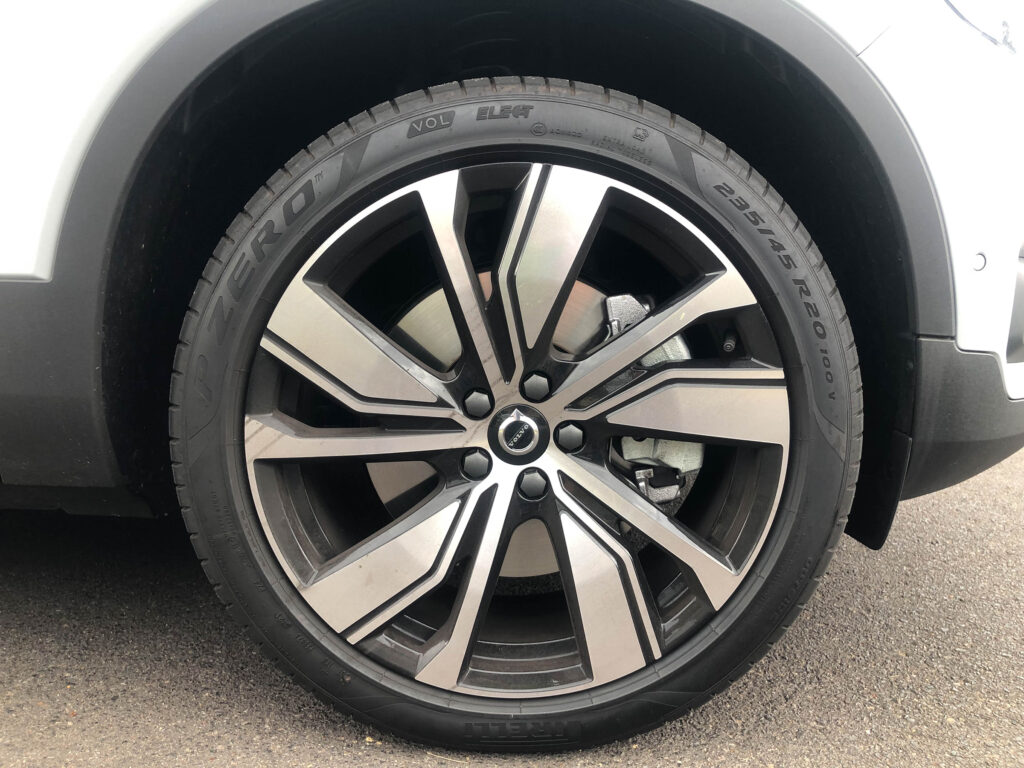
Despite that weight, there’s thoroughly respectable agility and the XC40 steers crisply.
Dial up the pace and it attacks a corner nicely, although whereas some EVs send more drive to the rear, the XC40 has equivalent electric motors front and rear, which can sometimes have the inside front wheel letting out a brief scrabble as it struggles for traction and fights the tendency for the front wheels to run wide, or understeer.
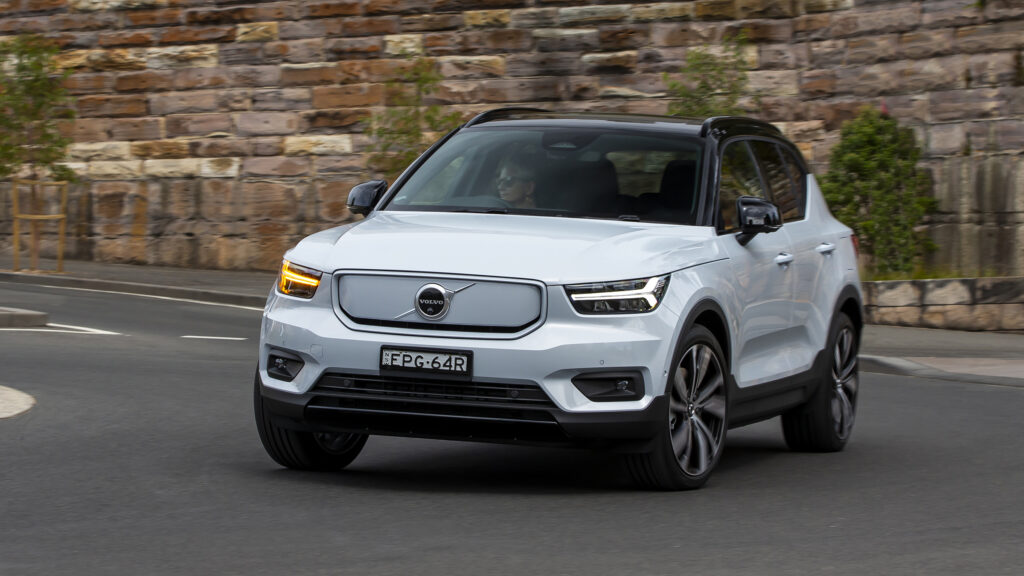
But up until that high threshold it’s a competent and fast machine.
It’s also relatively comfortable. While there’s no adjustable dampers, the standard suspension setting is well chosen and suits the liveable but fun-to-drive nature of the car.
There’s some initial firmness from the low profile rubber, but it otherwise does a nice job of dealing with bumps and controlling the body.
You can subtly adjust the steering feel, too.
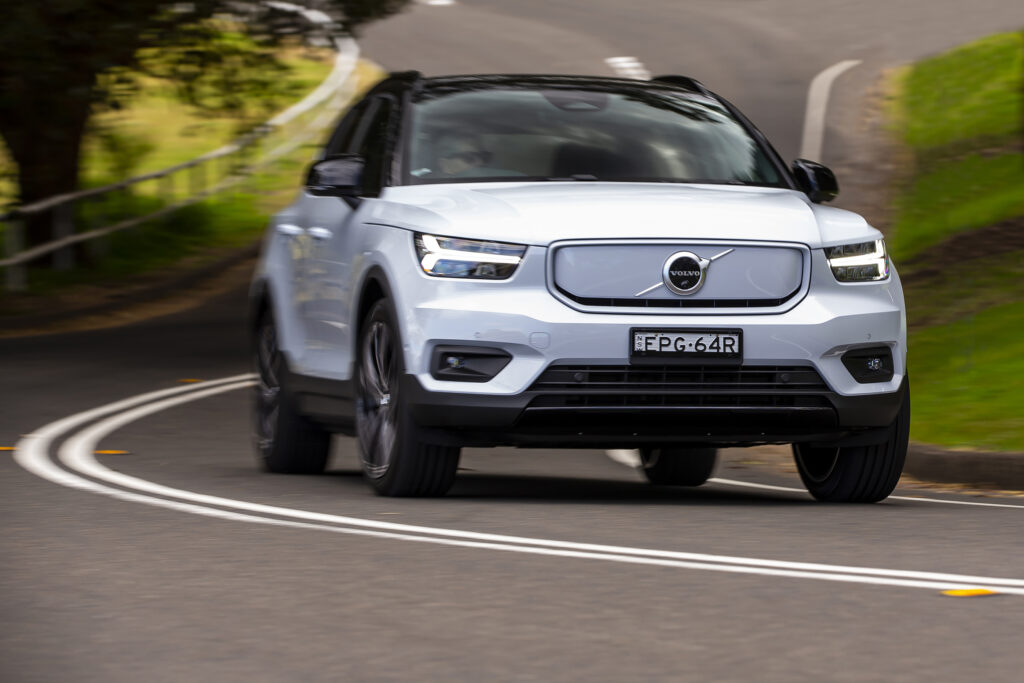
There is, however, some tyre noise. More noticeable at low speeds there’s often a deep booming and rumbling that takes the edge of the inherent EV quietness when trundling around town.
Talking point
The XC40 Pure Electric is the first car in Australia with Android Automotive. It’s different to Android Auto, which is simply a smartphone integration for Android phones.
Android Automotive is a complete operating system, leaving Google in charge of all things infotainment.
That means you get Google Maps (which work fine) as well as the Google Assistant to pepper with all sorts of questions about life and the universe (it’ll keep the kids amused, even if it is just asking her to make a fart sound).
You can change the accent and language of the Google Assistant. We found a polite English accent to work much better than an American one in the European cabin. Google also says an Australian accent is coming soon.
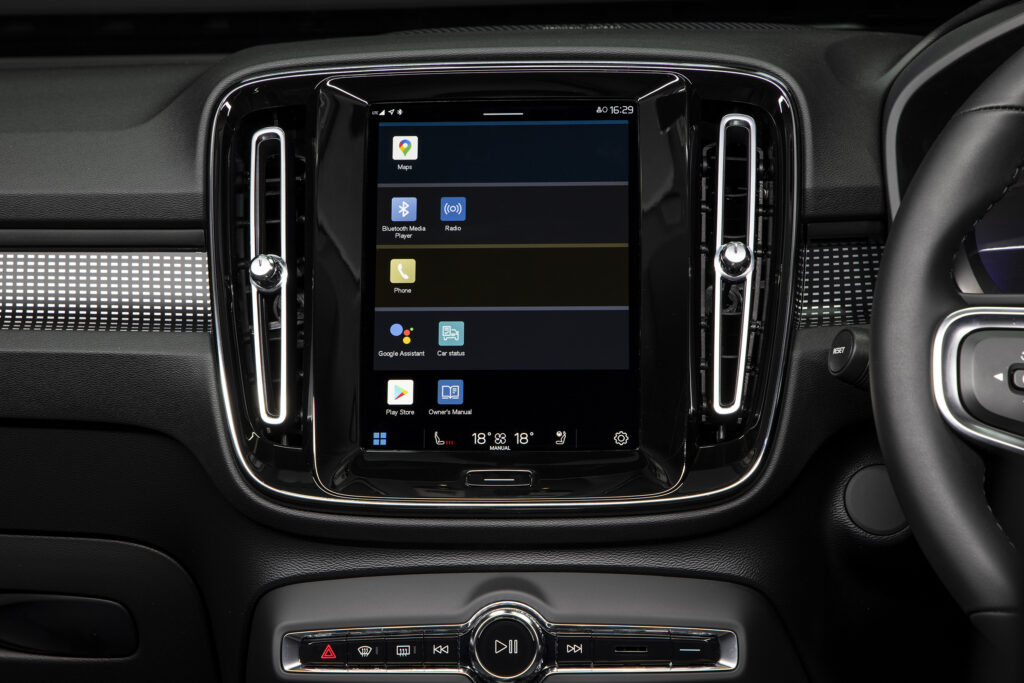
It also gives access to the Google Play store, which allows open-source apps to be uploaded, provided they’re deemed appropriate for use on the road. The selection was limited – and there were no mapping apps beyond Google Maps – although that should change over time.
There was no Apple CarPlay available when we tested the car, but Volvo says it will be available with an update late in 2021.
And, as mentioned further up, we have reservations about the ability of the system to work all day every day following some glitches.
Safety
Volvo is known for safety and the XC40 Pure Electric lives up to expectations.
It starts with a solid safety structure and seven airbags (dual front, front side, side curtain and a driver’s knee airbag). Extras such as fast-flashing hazard lights to warn approaching drivers who may not have spotted the slowed or stopped XC40 are indicative of the efforts Volvo has gone to.
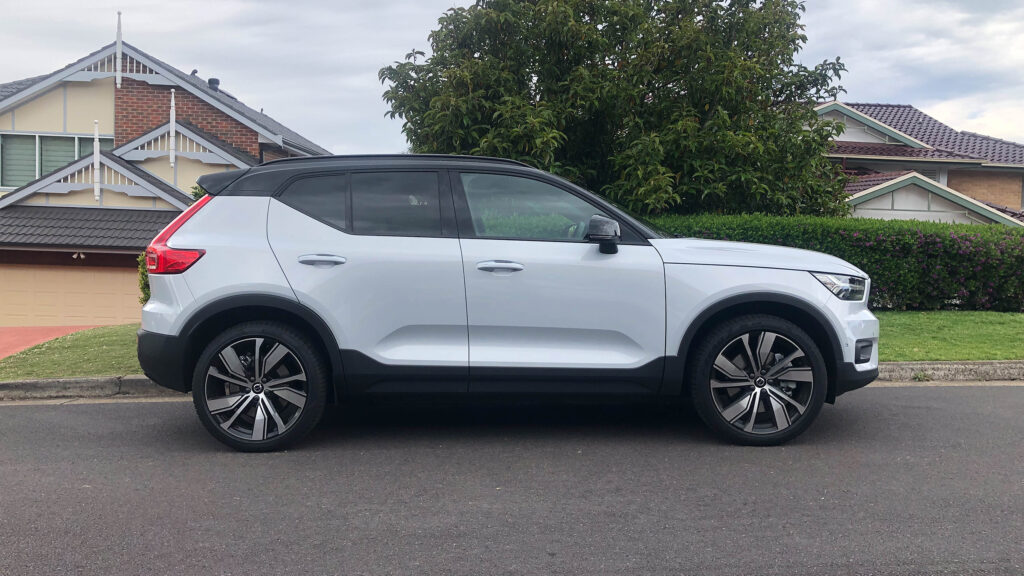
Volvo also has an orange “care key”, which can be programmed to a set maximum speed for novice or young drivers. While it will still allow them to feel all 300kW and 660Nm (a key that reduces maximum power outputs could be even handier), it can at least provide some peace of mind for parents.
There’s also speed sign recognition and blind spot warning and the 360-degree camera is handy for parking and carpark manoeuvring. There’s auto braking that uses a camera and radar as well as auto braking in reverse.
Verdict
There’s the occasional hangover from its ICE underpinnings, but the XC40 Pure Electric also adds an impressive dose of pace and grace to the premium compact SUV class. It’ll easily keep up with some pocket rocket SUV alternatives but does it with an effortlessness and city-friendly liveability that plays to its electric heart.
Loaded with gear and packed with pep and performance, the first EV from Volvo is an impressive start.
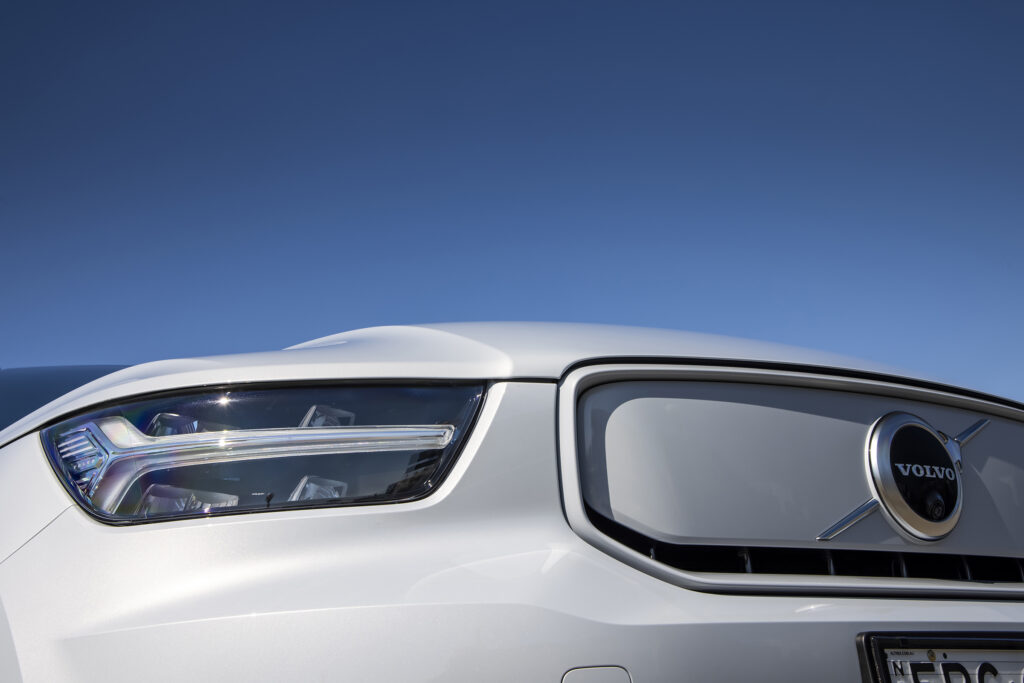
Volvo XC40 Recharge Twin Pure Electric specifications
Price: $76,990 plus on-road costs
Basics: EV, 5 seats, 5 doors, SUV, AWD
Range: 418km (WLTP)
Battery capacity: 75kWh (useable)
Battery warranty: 8 years/160,000km
Energy consumption: 25.5kWh/100km
Motors: 1 front 150kW/330Nm and 1 rear 150kW/330Nm, total output 300kW/660Nm
AC charging: 11kW, Type 2 plug
DC charging: 150kW, Type 2 plug
0-100km/h: 4.9 seconds

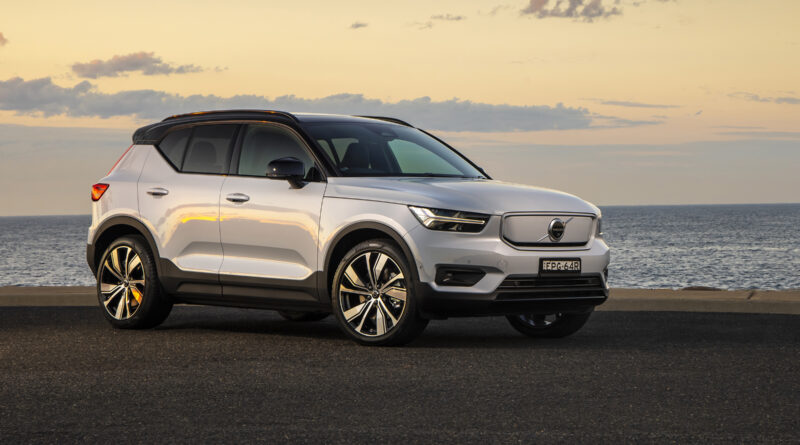
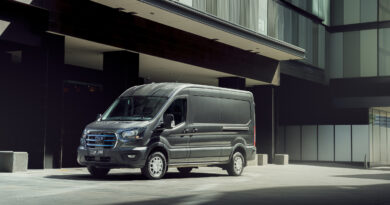

Hi Toby,
Great review here, thanks. Re the Android Automotive O/S I spoke with a new xc40 Recharge owner recently who has been experiencing very similar bugs to what you found. Given the availability of OTA software updates going forward, how confident are you that Volvo and Polestar can work with Google to sort them out?
Also the 360 degree, birds eye view monitor setup, how useful do you consider it compared to competitor systems.
Thanks
,
I’m confident Google/Android will get their eventually with getting rid of the bugs, but only because they’ll come under pressure from the car makers. And how long it takes is anyone’s guess; I wouldn’t be surprised if some bugs keep having their way for the next year or so. Experience suggests tech companies like pushing the boundaries on introducing new features without always ensuring those features are bug-free. While car makers have often been more conservative on the in-car offerings, it’s usually pretty good at working reliably. The car makers will absolutely be keen to ensure those electronics work reliably. It’ll become more important as Android Automotive starts controlling more features in the car. It’s one thing for the navigation or radio to give up, but it’s another if it’s the lights or windscreen wipers.
As for the 360 degree camera, the Volvo one is one of the better ones, with a clear display that shows plenty of detail. It also allows you to tailor the view you’re looking at.
Hi all…I had the Volvo on order but cancelled based on the energy consumption….it is a pretty blunt vehicle and compared with the Tesla 3 that I bought it goes through effectively twice as much energy per km. The emotional decision was for the Volvo, beautiful car, stunning interior etc and my wife really wanted one but the thought of getting low on charge on a 40 degree day with A/C on our weekly 300 km trip versus the complete confidence of range in the Tesla (and around $18000 savings was a deal breaker. We love what Volvo is doing and the polestar and next generation will be highly competitive!